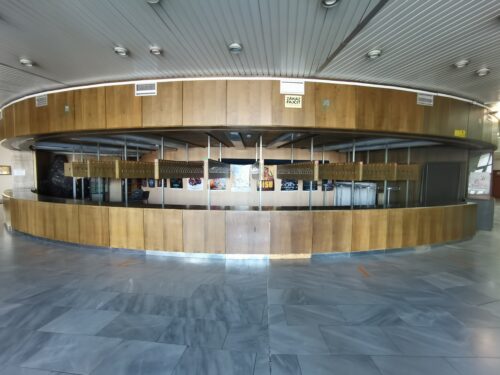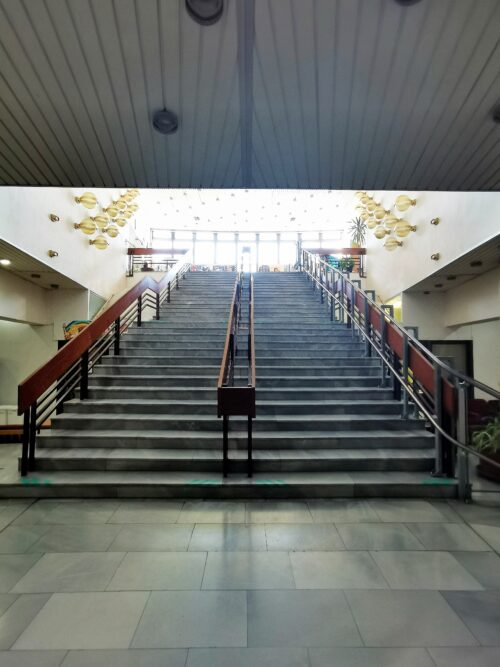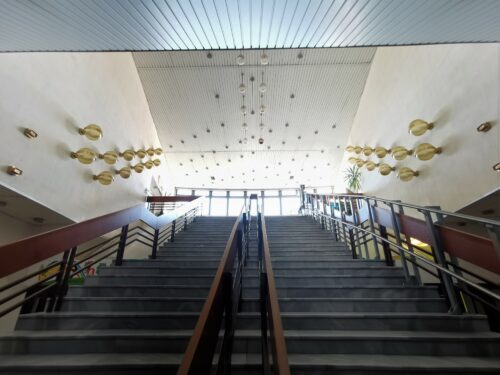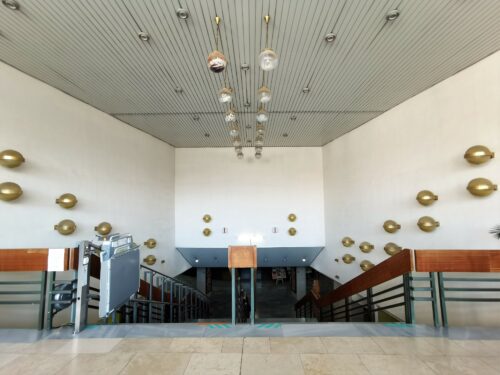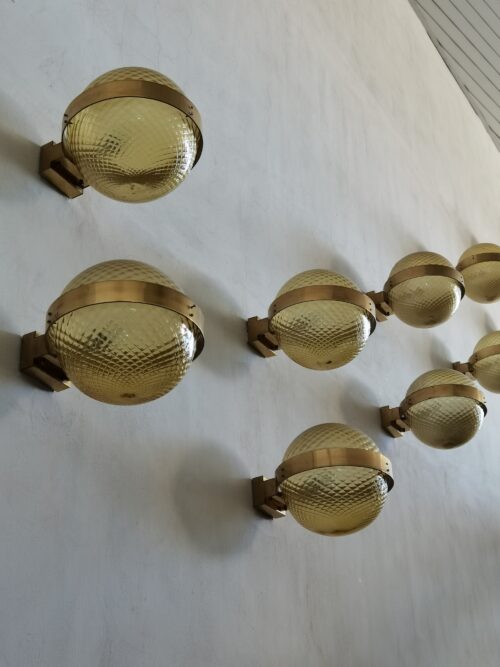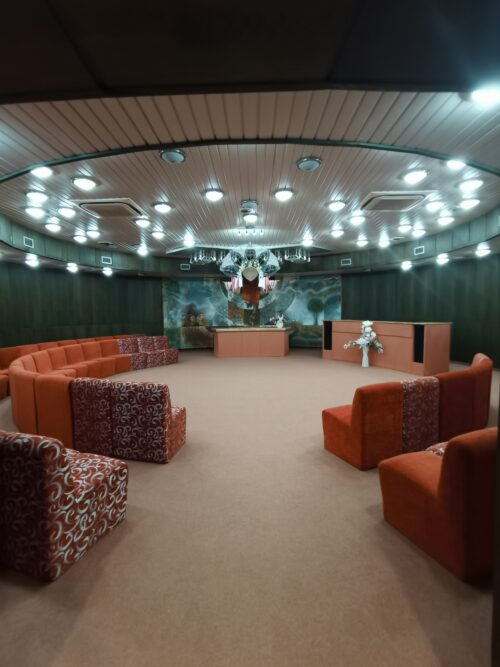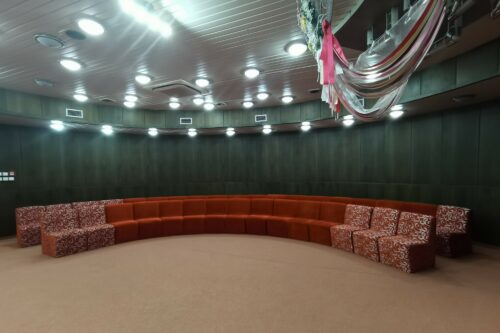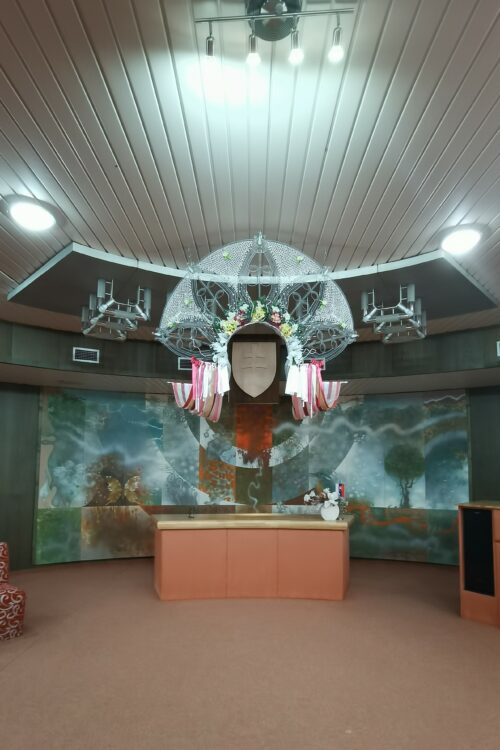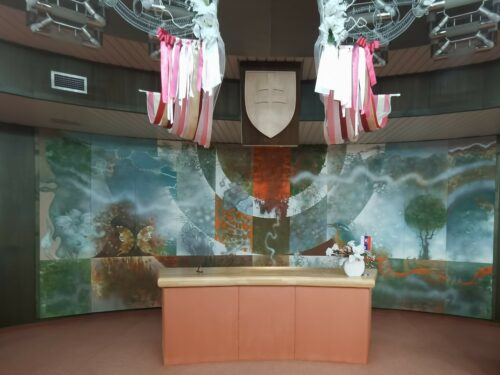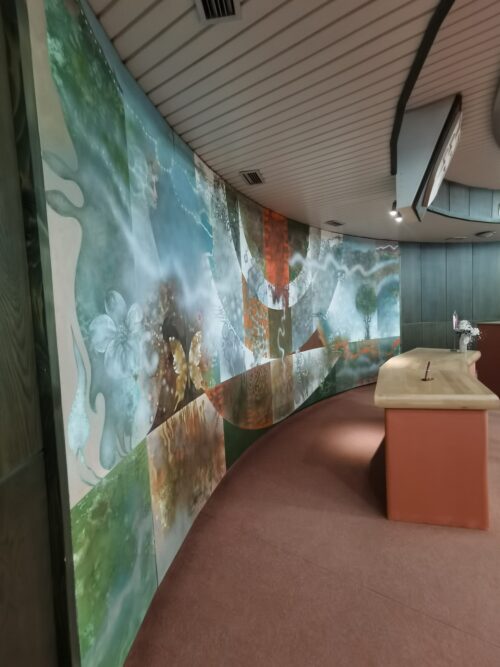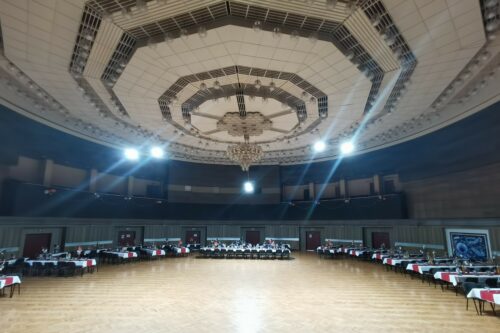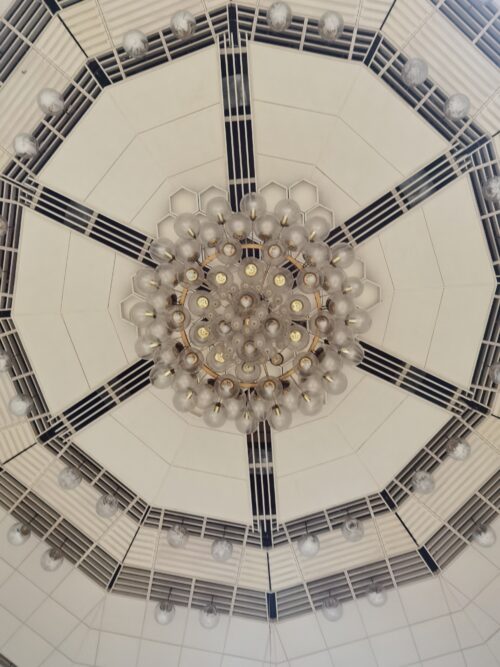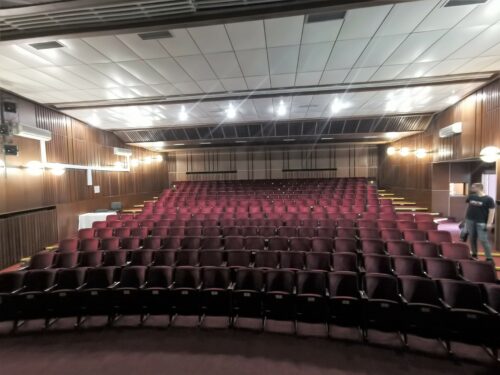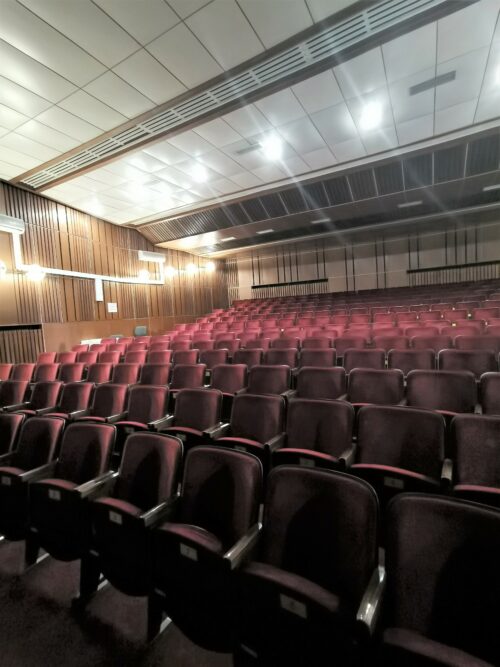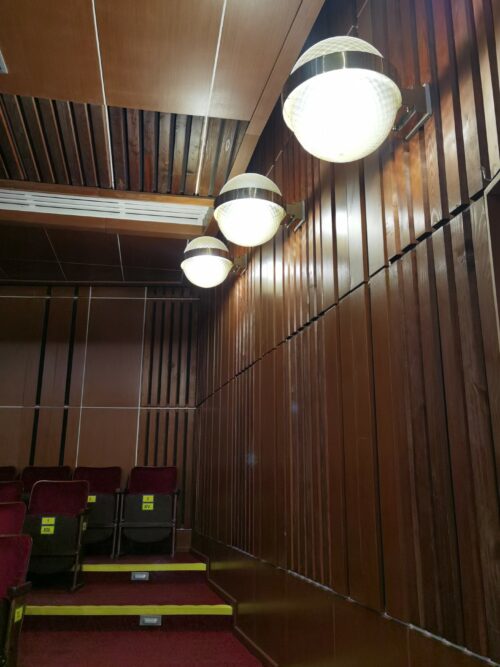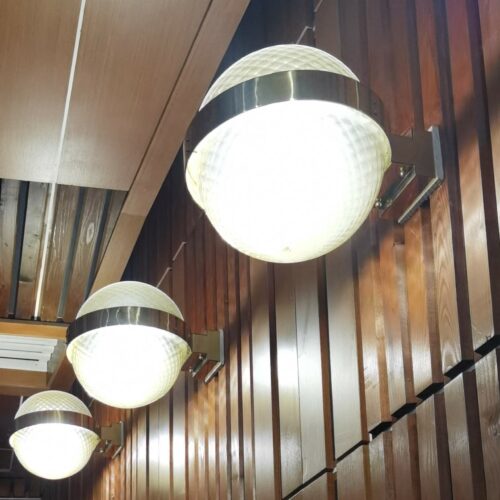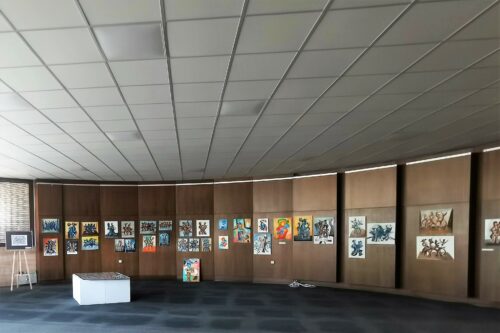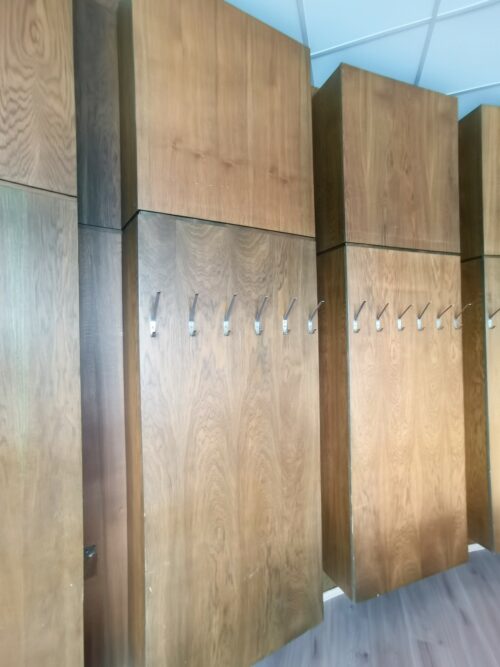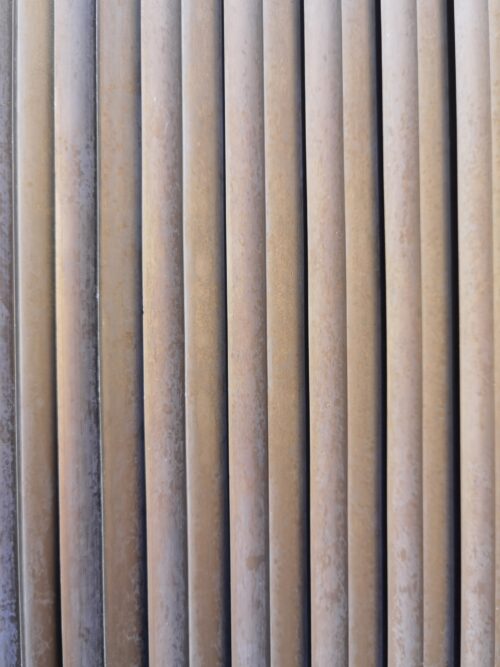Municipal Cultural Centre
Category: Cultural institutions
Architects: Vratislav Růžička, Eva Růžičková
Interior design: Jan Hendrych – Miloslav Cajthaml atelier
Work of art: Štefan Polák
Location: SNP 119, Žiar nad Hronom
Design completion: 1974
Built in years: 1974–1978

In its early days, the municipal cultural centre, built for the then industrial town with around 15,000 inhabitants, was a unique public building comprising several functions for the cultural life under one roof. For more than 45 years, the centre has preserved the hall premises, clubroom, bar/coffee bar, meeting room, exhibition hall and ballrooms in the basement, which are still available to the visitors. The basement was originally designed solely to provide the technical and service facilities for the building and the shelter of citizens’ Civil Protection; a part of the shelter was turned into a hall of mirrors and ballroom later.
The building is characterised by a central, monumental cylinder-shaped mass surrounded with lateral wings in the form of prisms. To a large degree, the building’s shapes gave the fundamentals for soft, rounded shaping applied in the interior. The motif of a cylinder is reflected in the building interior in the form of rounded lines of walls, it can be seen also in the layout composition and in the design of interior elements. “According to the original concept it was assumed that the interior will mainly include aluminium, to refer to the major industry branch in the town.” [1] In the final rendition, the original idea was abandoned to give way to veneered wall panelling, burnished glossy marble facing on the supporting pillars, and marble flooring. Thus, the aluminium materiality hinting at the former plant for aluminium production, is present mostly on the building’s facade and through interior ceilings.
After her visit, Barbora Černáková summarised her observations with the following words: “Right at the entrance into the building, there is a centrally placed large-scale cloakroom, which matches the cylindrical shape of the building structure. Several other rooms of a circle floor plan are located around the perimeter of the ground floor – the meeting room, exhibition room and the wedding hall. In the wedding hall original armchairs arranged into an arc can be seen, however they were covered with new upholstery. The construction-dominant feature of the ground floor is a robust double-flight staircase leading to the upper floor. In the centre of the second floor there is a principal multi-purpose hall, again of a circle floor plan, where celebrations, balls, concerts, and other events are held. The hall is of large dimensions and has a several metres height. A renovated cinema hall, offering 157 seats and 2 wheelchair places, is accessible from the second floor. There is also a theatre hall with 260 spectator seats on the same floor, which comprises original wooden fold-in seats. All of these rooms are dominated by different colours – in the wedding hall it is orange and green, the theatre hall is ruled by claret colour, and blue reigns in the renovated cinema. Natural colouring of the wood combined with white panelling of the ceiling are predominant in the multi-purpose hall.” [2]
The identity of the interior environment is inseparably associated with the presence of sculpturally designed and colourfully decorated luminaires. Suspended and corbelled spherical lights decorate the stairway space; the cinema interior is dominated by wall lamps of a circular diameter. The light in the multi-purpose hall attracts most attention: impressive by its size, it is composed of a series of thirty spherical lampshades. The centrally placed light sculpture is rounded by a set of 400 ceiling-hung dot lights creating attractive luminous scenery. Shapes and arrangement of the lighting elements in the lobbies, wedding hall and other rooms also follows their characteristic rounded shaping.
“Even the municipal centre’s exterior makes the impression of an exceptional building, because of the outer shape having a non-conventional cylindrical form. The use of the edifice is a curiosity across the entire Slovakia, perhaps. It is not entirely common that a single building would offer nearly all forms of human cultural enjoyment. In the end, the interior spaces leave a pleasant and simple impression. Several original elements of furnishings and parts of the building interior have been preserved in good condition.” [2]
- Schránilová Anna, Kracík Matyáš: Architekt Vratislav Růžička a jeho nejen pražské realizace. [Architect Vratislav Růžička and his not only Prague realizations.] Web portal: Zprávy památkové péče. Národní památkový ústav. In: https://zpp.npu.cz/artkey/zpp-201806-0004_architect-vratislav-ruzicka-and-his-not-only-prague-realizations.php
- Černáková Barbora: Mestské kultúrne stredisko, Žiar and Hronom. [Municipal Cultural Centre, Žiar nad Hronom.] Seminar paper for the Public Interior course. Faculty of Architecture and Design STU Bratislava, Summer Term 2022–23
Barbora Černáková
